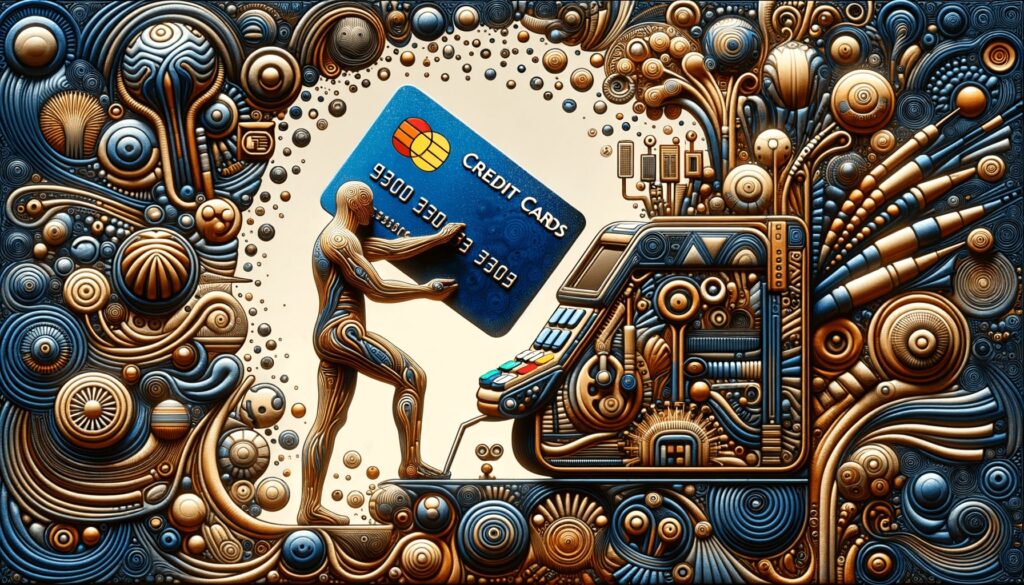
By Mollie Mills December 13, 2024
Accepting credit cards over the phone has become an essential part of many businesses’ operations. It allows merchants to expand their customer base and provide a convenient payment option for their clients. However, setting up and managing phone credit card processing can be a complex task.
In this comprehensive guide, we will explore the basics of accepting credit cards over the phone, including setting up a merchant account, choosing the right payment gateway, ensuring security and compliance, and best practices for efficient processing. We will also address common challenges and troubleshooting tips, integrating phone credit card processing with existing systems, and how it can help expand your business. So, let’s dive in!
Understanding the Basics of Accepting Credit Cards

Before delving into the specifics of accepting credit cards over the phone, it is crucial to understand the basics of credit card processing. When a customer makes a purchase using a credit card, the transaction goes through a series of steps to ensure the payment is authorized and processed securely. These steps include authorization, batching, and settlement.
Authorization is the first step in the process, where the merchant requests approval from the customer’s credit card issuer to ensure the funds are available for the transaction. Once the authorization is obtained, the transaction is batched, meaning it is grouped with other transactions to be processed together. Finally, settlement occurs when the funds are transferred from the customer’s credit card account to the merchant’s account.
Setting Up a Merchant Account for Phone Payments

To accept credit cards over the phone, you will need to set up a merchant account. A merchant account is a type of bank account that allows businesses to accept credit card payments. It acts as an intermediary between the merchant, the customer, and the credit card issuer.
To set up a merchant account, you will need to choose a payment processor or acquiring bank that will handle your credit card transactions. Research different providers and compare their fees, services, and customer support. Once you have selected a provider, you will need to complete an application and provide necessary documentation, such as your business license, tax ID, and financial statements.
Choosing the Right Payment Gateway for Phone Transactions

A payment gateway is a software application that securely connects your website or phone system to the credit card processing network. It encrypts sensitive customer information and facilitates the transfer of data between your business, the customer, and the payment processor.
When choosing a payment gateway for phone transactions, consider factors such as security, compatibility with your phone system, ease of use, and integration options. Look for a payment gateway that supports phone payments, offers robust security features like tokenization and encryption, and provides a user-friendly interface for processing transactions.
Ensuring Security and Compliance in Phone Credit Card Processing

Security and compliance are paramount when accepting credit cards over the phone. Customers trust businesses to protect their sensitive payment information, and any breach can have severe consequences for both the customer and the merchant. Therefore, it is essential to implement robust security measures and comply with industry standards and regulations.
One of the most effective ways to ensure security in phone credit card processing is to use a secure payment gateway that encrypts customer data during transmission. Additionally, consider implementing measures such as PCI DSS compliance, which sets standards for securely handling credit card information. Regularly update your systems and train your staff on security best practices to minimize the risk of data breaches.
Step-by-Step Guide: Accepting Credit Cards Over the Phone
Here is a step-by-step guide to help you navigate the process
1.Gather customer information
When a customer calls to make a purchase, collect their name, billing address, shipping address (if applicable), credit card number, expiration date, and CVV code.
2.Verify customer information
Confirm the customer’s identity by asking for their phone number, email address, or any other relevant information. This step helps prevent fraudulent transactions.
3.Enter customer information into the payment gateway
Use your payment gateway’s virtual terminal or phone payment feature to enter the customer’s information securely. Ensure that the payment gateway encrypts the data during transmission.
4.Obtain authorization:
Initiate the authorization process by submitting the customer’s information to the payment gateway. The payment gateway will communicate with the customer’s credit card issuer to verify the transaction.
5.Communicate the transaction status to the customerOnce the authorization is obtained, inform the customer whether the transaction was approved or declined. If approved, provide them with a confirmation number or receipt.
6.Record the transaction details
Keep a record of the transaction details, including the customer’s information, transaction amount, date, and time. This information will be useful for reconciliation and customer service purposes.
7.Batch and settle transactions
At the end of the day or a specified time period, batch the authorized transactions and submit them for settlement. The funds will be transferred from the customer’s credit card account to your merchant account.
Best Practices for Efficient and Effective Phone Credit Card Processing
To ensure efficient and effective phone credit card processing, consider implementing the following best practices:
1.Train your staff
Provide comprehensive training to your staff on how to handle phone payments, including data security, customer verification, and transaction processing. Regularly update their knowledge to stay up-to-date with industry trends and regulations.
2.Use a script
Develop a script or guidelines for your staff to follow when accepting credit cards over the phone. This will ensure consistency and accuracy in collecting customer information and processing transactions.
3.Minimize data retention
Avoid storing sensitive customer information, such as credit card numbers, after the transaction is completed. Implement tokenization or encryption to protect customer data and reduce the risk of data breaches.
4.Offer alternative payment methods
In addition to credit cards, consider accepting other payment methods like debit cards, mobile wallets, or bank transfers. This provides customers with more options and can increase conversion rates.
5.Provide excellent customer service
Ensure your staff is trained to handle customer inquiries, resolve issues promptly, and provide a positive experience. A satisfied customer is more likely to become a repeat customer and recommend your business to others.
Common Challenges and Troubleshooting Tips for Phone Payments
While accepting credit cards over the phone offers numerous benefits, it can also present challenges.
Here are some common challenges and troubleshooting tips to overcome them:
1.Communication issues
Poor call quality or miscommunication can lead to errors in collecting customer information. Ensure your phone system is reliable, and train your staff to ask for clarification if needed.
2.Fraud prevention
Phone transactions are susceptible to fraud attempts. Implement fraud prevention measures such as address verification, CVV verification, and customer identity verification to minimize the risk of fraudulent transaction
3.Payment declines
Sometimes, transactions may be declined due to various reasons, such as insufficient funds or suspected fraud. Train your staff to handle declined transactions professionally and provide alternative payment options if available.
4.Technical difficulties
Occasionally, technical issues may arise with your payment gateway or phone system. Have a backup plan in place, such as a secondary payment gateway or manual processing, to ensure uninterrupted service.
Expanding Your Business with Phone Credit Card Processing
Accepting credit cards over the phone can help expand your business by reaching a wider customer base and providing a convenient payment option.
Here are some ways to leverage phone credit card processing to grow your business:
1.Offer phone orders and customer service
By accepting phone orders, you can cater to customers who prefer to make purchases over the phone or have questions before making a purchase. Provide excellent customer service to build trust and loyalty.
2.Expand into new markets
Phone credit card processing allows you to sell to customers outside your local area or even internationally. Market your products or services to a broader audience and leverage phone payments to facilitate transactions.
3.Upsell and cross-sell
Train your staff to identify upselling and cross-selling opportunities during phone transactions. Offer complementary products or services to increase the average transaction value and maximize revenue.
4.Implement recurring billing
If you offer subscription-based services or products, implement recurring billing through phone credit card processing. This ensures a seamless payment experience for your customers and improves cash flow for your business.
Frequently Asked Questions (FAQs) about Accepting Credit Cards Over the Phone
Q1. Is it safe to accept credit cards over the phone?
Yes, it is safe to accept credit cards over the phone if you follow security best practices, such as using a secure payment gateway, encrypting customer data, and complying with industry standards like PCI DSS.
Q2. What information do I need to collect from customers for phone payments?
When accepting credit cards over the phone, collect the customer’s name, billing address, shipping address (if applicable), credit card number, expiration date, and CVV code. Additionally, verify the customer’s identity by asking for their phone number or email address.
Q3. How long does it take for funds to be transferred to my account after a phone transaction?
The time it takes for funds to be transferred to your account after a phone transaction depends on your payment processor’s settlement schedule. Typically, it can take anywhere from one to three business days.
Q4. Can I accept debit cards over the phone?
Yes, you can accept debit cards over the phone. Debit card transactions follow a similar process to credit card transactions, but the funds are deducted directly from the customer’s bank account.
Q5. What should I do if a phone transaction is declined?
If a phone transaction is declined, inform the customer politely and offer alternative payment options if available. Train your staff to handle declined transactions professionally and assist customers in completing their purchase.
Conclusion
Accepting credit cards over the phone is a valuable tool for businesses looking to expand their customer base and provide a convenient payment option. By understanding the basics of credit card processing, setting up a merchant account, choosing the right payment gateway, ensuring security and compliance, and following best practices, you can successfully accept credit cards over the phone.
Overcome common challenges, integrate phone credit card processing with your existing systems, and leverage it to grow your business. With proper training, robust security measures, and efficient processes, you can provide a seamless and secure payment experience for your customers.